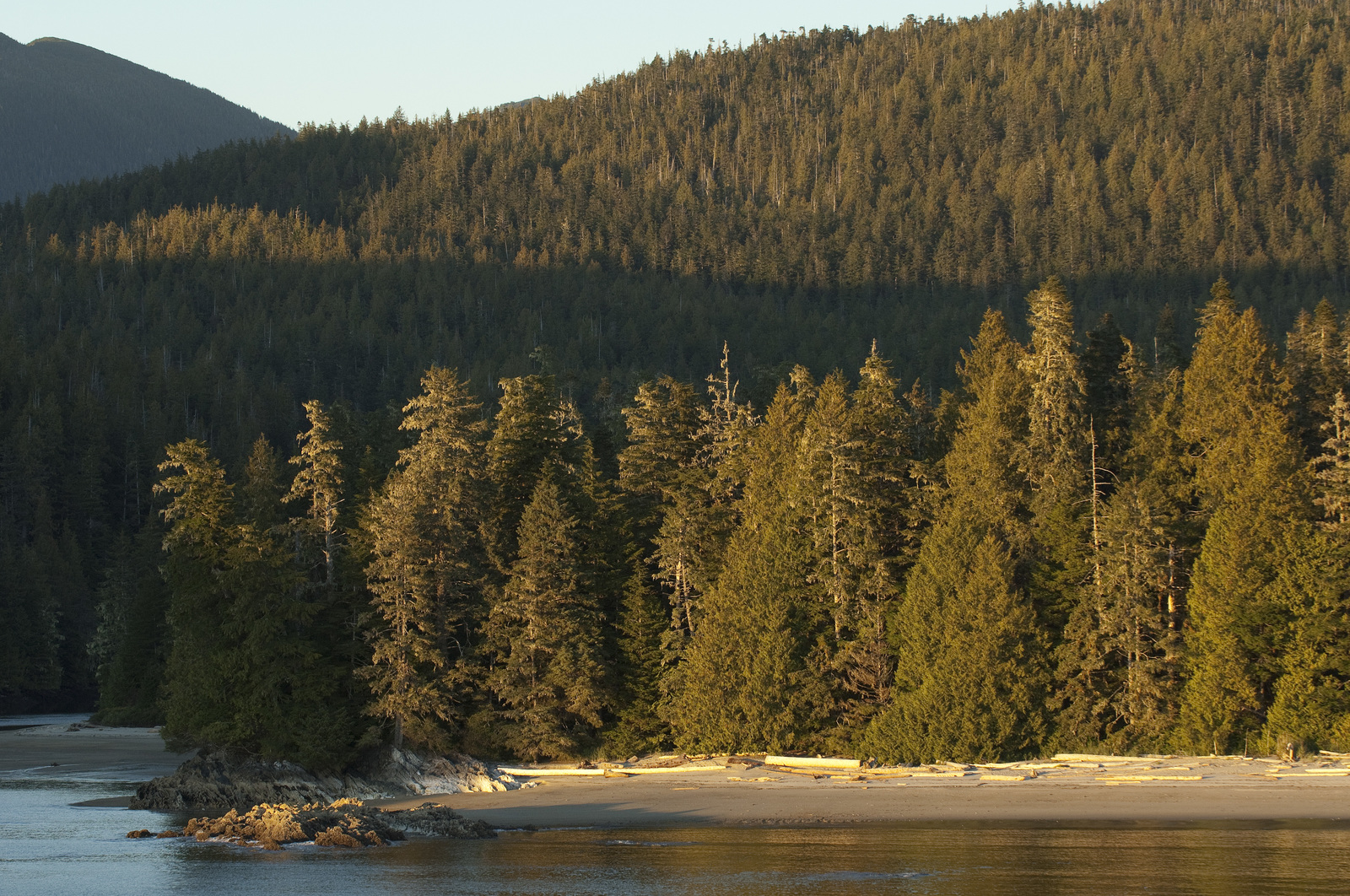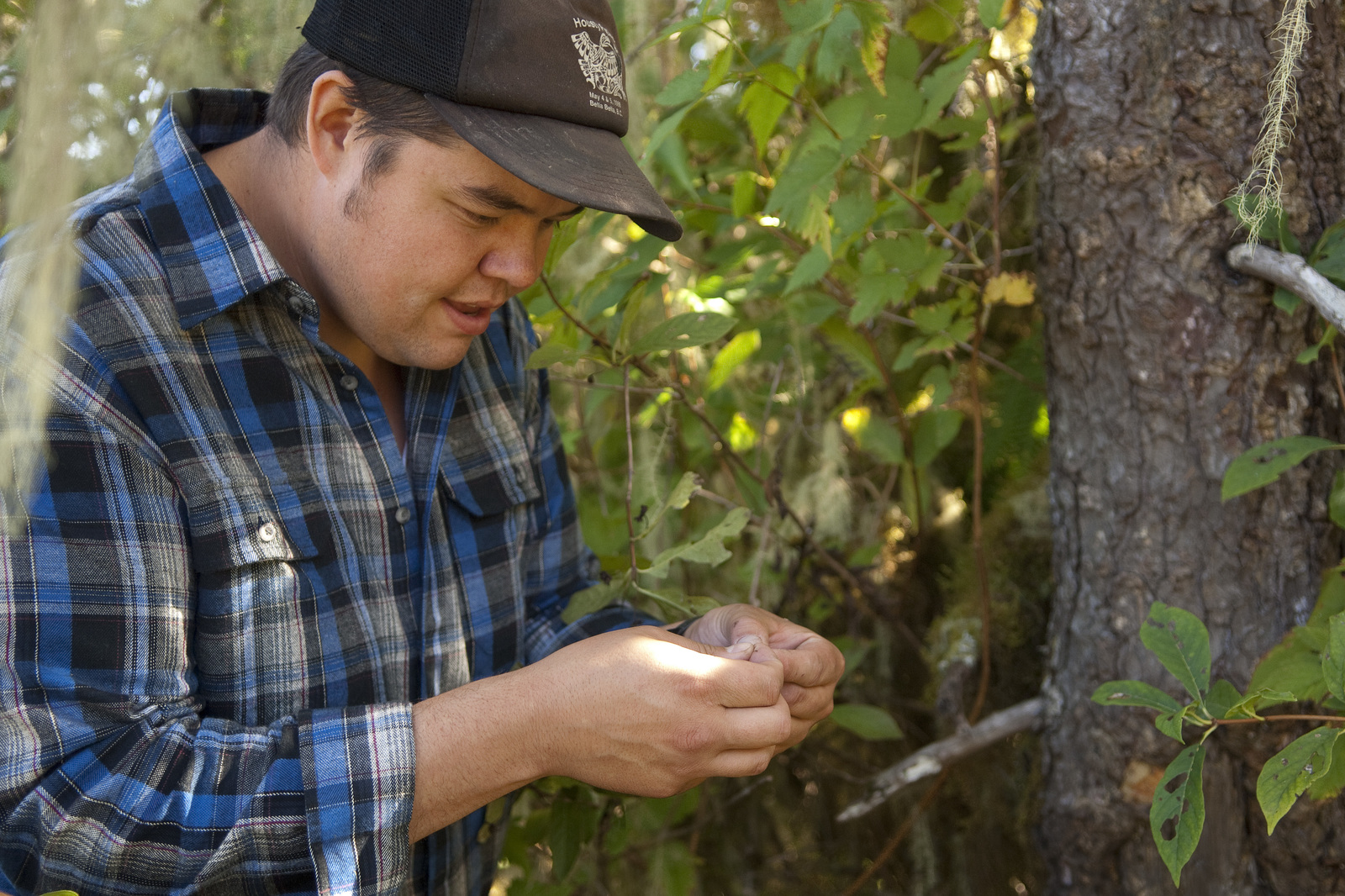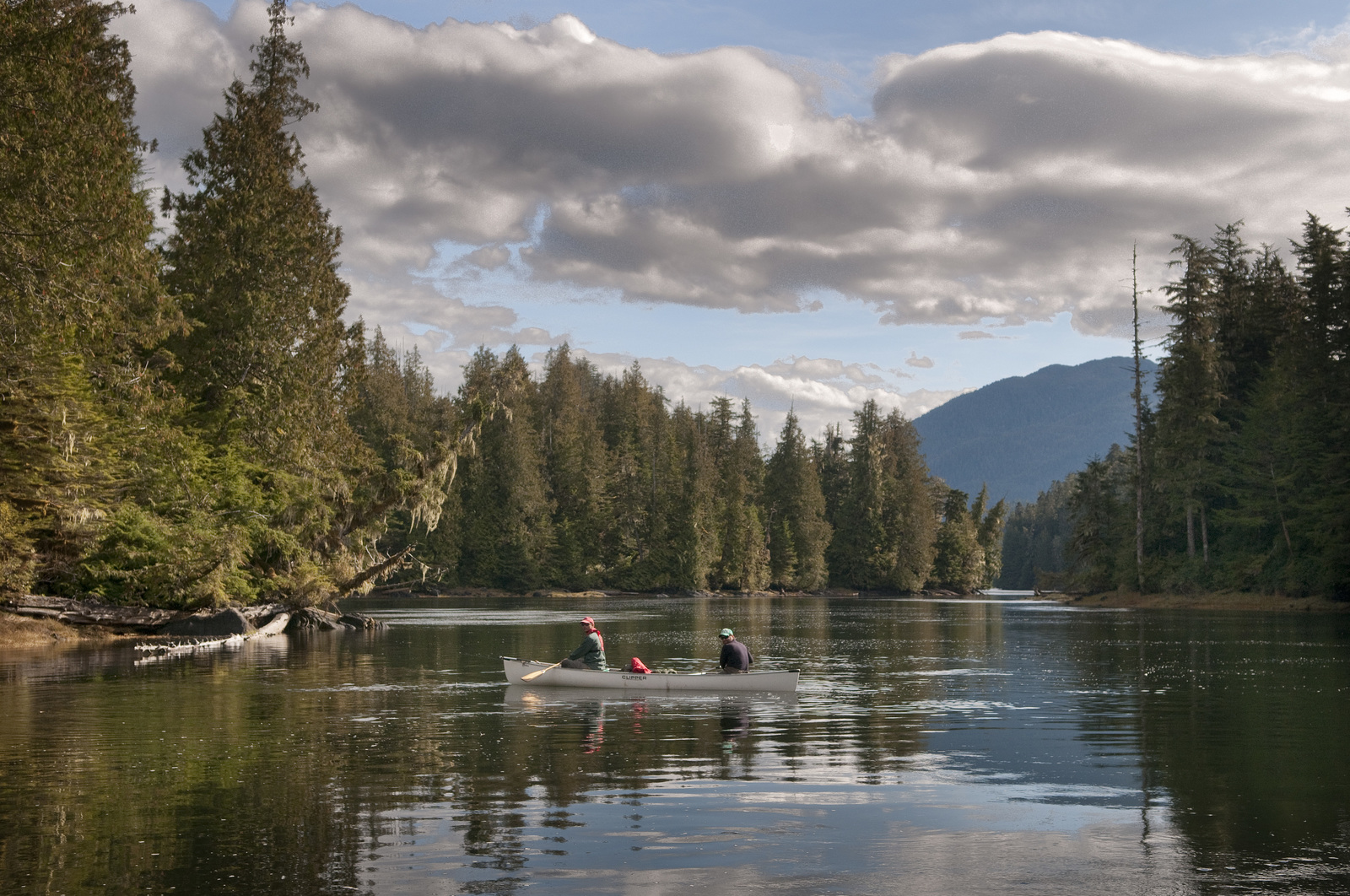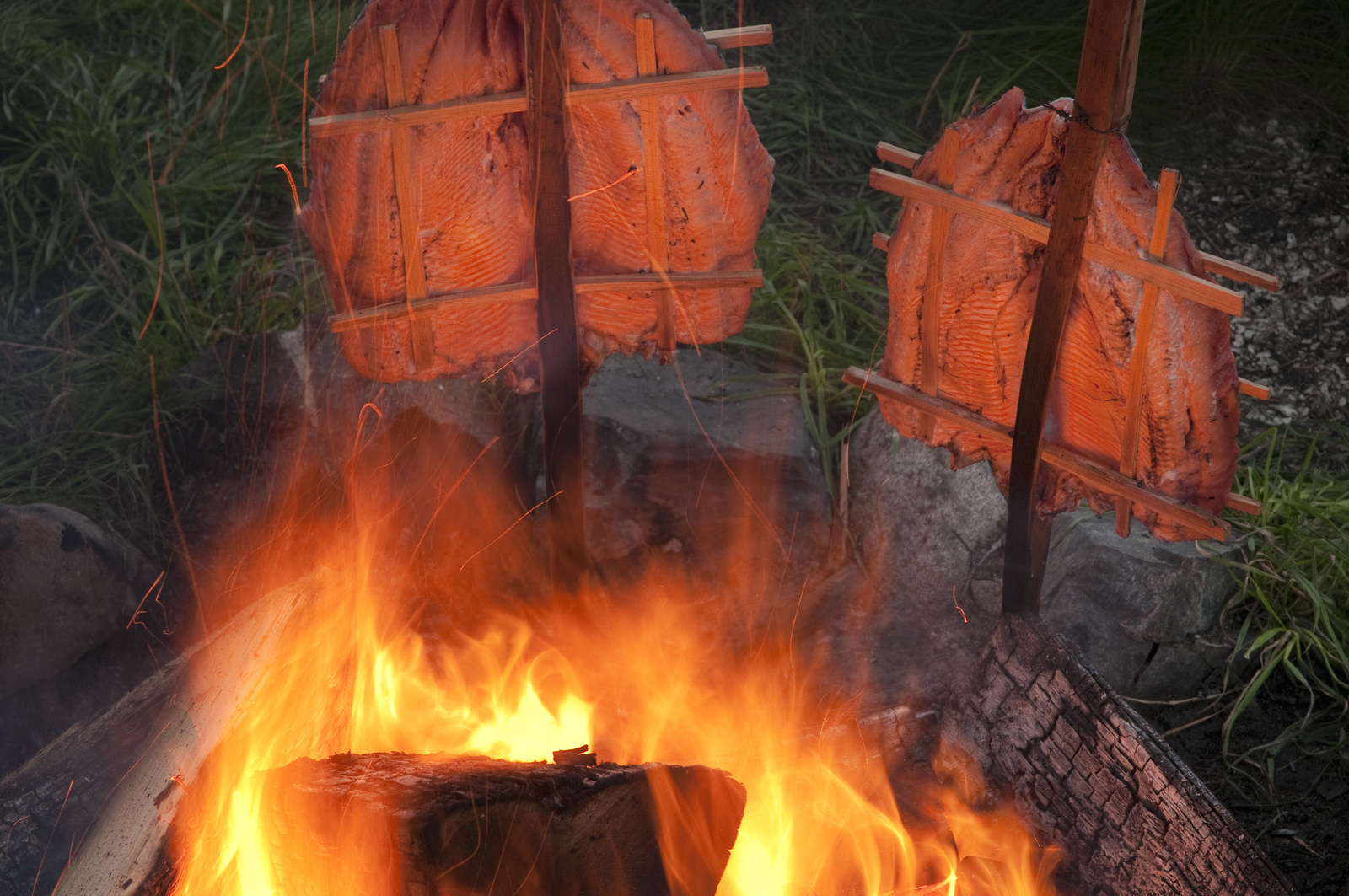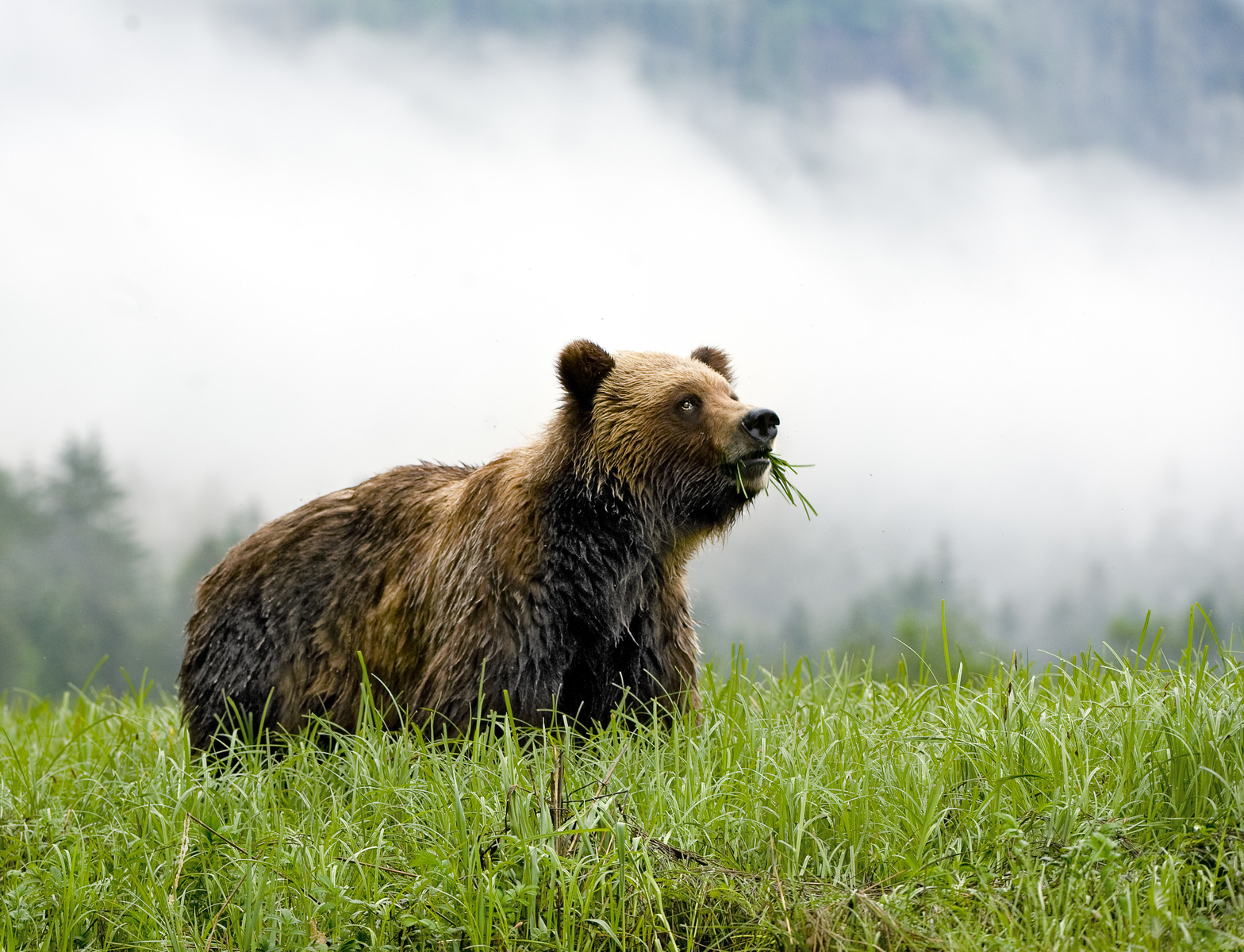The Great Bear Rainforest is a land of towering trees, salmon-filled rivers and peoples with a presence as old as time. On Feb. 1, we celebrated as the government of British Columbia and the governments of 26 First Nations signed an historic agreement that will forever conserve 19 million acres in British Columbia, banning logging on much of the land and setting stringent ecological protections on the remaining portions.
Getting to this agreement is a triumph for many – including indigenous people, conservationists, the forest industry, the provincial government and The Nature Conservancy.
Ancient Trees and Spirit Bears
The Great Bear Rainforest stretches across the coast of British Columbia from the north end of Vancouver Island to the border with Alaska. In this deeply interconnected ecosystem, thousand-year-old trees stand sentinel over the mossy hush. Its forests, streams, and marine waters are home to wolves, whales, salmon and other wildlife, including the iconic spirit bear, or kermode, a rare white form of black bear. The Great Bear Rainforest is also homeland to First Nations, whose very being is intertwined with the region’s natural abundance.
Over the last two decades First Nations people, along with conservationists, have fought against widespread logging that has threatened the Great Bear Rainforest. In 2008, The Conservancy helped craft an interim agreement that created 5 million acres of new protected areas, and applied more sustainable forest practices to the rest.
The 2016 Great Bear Rainforest Agreement adds another 4 million forested acres to that off limits to logging. It also imposes rigorous constraints on logging practices within the remaining forested lands of the Great Bear Rainforest. “This is a really big deal,” said Jenny Brown, the Director of Conservation for TNC Canada. “It lights the path for fulfilling a commitment to a future with some logging, sustainability of old growth forests, and a vital and robust indigenous voice in this region.”
First Nations Take the Lead
The Great Bear Rainforest Agreement also continues to elevate the voice of indigenous peoples. “It builds on a recent history of significant engagement by First Nations in the decision-making process,” said Brown.
An essential foundation of the agreement is the Coast Opportunity Fund, which was established in 2007. This fund provides the means to connect First Nations, conservation, and economic development in the Great Bear Rainforest, and ensures that First Nations lead here. “The agreement could not have happened without the Coast Opportunity Fund,” said Eric Delvin, Interim Director of the Conservancy’s Emerald Edge program.
The Conservancy has played a major behind-the-scenes role in the Coast Opportunity Fund. We raised $39 million to create the fund, leveraging another $81 million in additional private and public funding to be made available to First Nations communities. The total $120 million has been used to advance economic development and capacity for resource management in the region.
The Coast Opportunity Fund puts First Nations leadership in science, stewardship and natural resource policy into action. Most of the First Nations involved in the agreement now have natural resource offices or a governance system for engaging in co-management with the Province. A program – SEAS, Supporting Emerging Aboriginal Stewards - that educates, inspires, and involves First Nations youth has been developed by coastal communities. Over 35 indigenous people serve as the eyes and ears of the coast, monitoring the forest and marine waters as Coastal Guardian Watchmen, and many new First Nations businesses been established.
Next on the agenda: The marine environment of the Great Bear Rainforest, which is so integral to the region. The Conservancy has committed to supporting efforts to conserve and protect this resource. As a start, First Nations and British Columbia have identified 238 marine areas for protection as part of a recently signed agreement between the two sets of governments.
This makes the coast of British Columbia one of only a few places in the world with a complete Marine Use Plan, and the only place where these plans were agreed to by both Indigenous people and the state.
Taking It to the Emerald Edge
The Great Bear Rainforest is within the Conservancy’s Emerald Edge program area, which includes coastal rainforest extending from Washington to Alaska. The landmark agreement is a model for the sustainable, ecologically-driven management and leadership by indigenous people the Conservancy envisions for the entire Emerald Edge, and large scale programs worldwide.
In Clayoquot Sound, the heart of Vancouver Island, we’re working with First Nations to create new protected areas in old-growth forests and increase their management authority. This partnership has been driven by the First Nations interests in taking greater leadership in natural resource management decisions to shape a sustainable future for their territory and people.
In Alaska’s Tongass Forest, we’re helping drive a shift away from a focus on old-growth timber management and toward a focus on the harvest of young growth trees, restoration of forests and streams, while also diversifying economic opportunities and creating jobs in renewable energy, aquaculture, fishing and tourism.
And in Washington’s Olympic Rainforest, we’re restoring forests, floodplains and salmon rivers, while working with communities to enhance local economies.
Delvin calls the growth of First Nation’s stewardship in their home territories “momentous.” “Having local communities engaged is key for the long-term sustainability of these massive, ecologically significant landscapes of the Emerald Edge,” he says. “Stewardship by local communities, including indigenous communities, is how we think about the Emerald Edge.”


